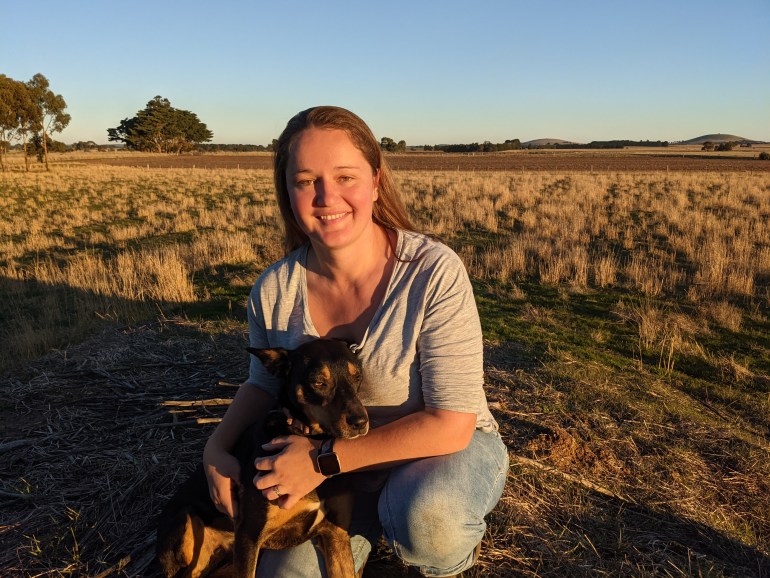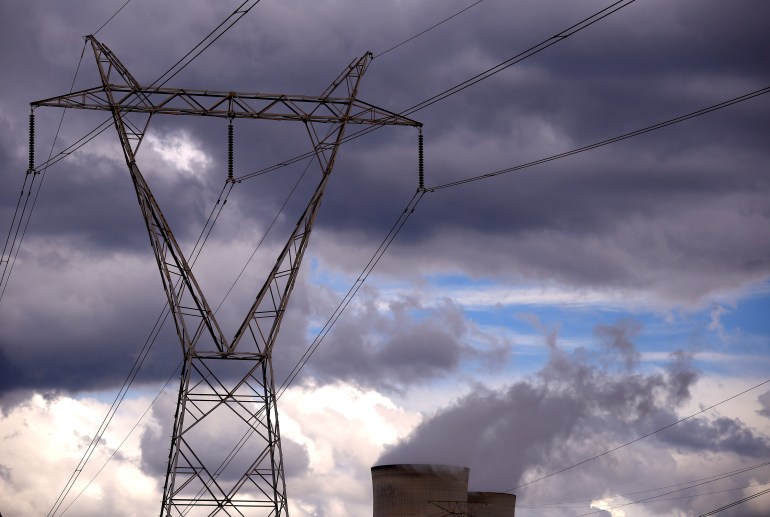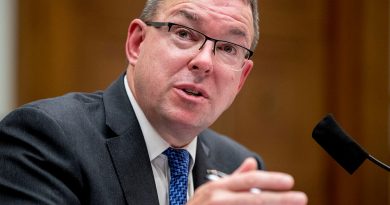In Australia, farmers up in arms over renewable energy rollout | Energy News
For more than half a century, the Myers family has grown potatoes near Ballarat, a city in the Australian state of Victoria, on soil food giant McCain says produces “some of the best quality and highest yielding potato crops in the world”.
But now the Myers and 28 other growers in the region say their livelihoods are at stake because of a proposed 190km (118 miles) trail of high voltage power lines linking a new wind farm in the state’s west to the state’s capital Melbourne. Suspended 80 metres (50 feet) above the ground by 380 steel towers, the lines will carry enough renewable energy to power half a million homes.
“There are three corridors for towers proposed on our land,” Katherine Myers, 36, told Al Jazeera.
“One will affect our expansion plans, the other will go through our irrigated farm block and the third will have a catastrophic impact on our production system as we won’t be able to refuel or repair our machines under the transmission lines because they leak electricity. So you can’t have anything metal underneath, even a fence, because if you touch it, you’ll get zapped.”
Myers insists she is not against renewable energy or the project in principle.
“We just want the power cables to run underground because the towers eat up our farmland,” she said.
“If this was the 1950s and transmission towers were the only option, it’d be a different story. But Australia has the world’s best practice in installing underground cables. The Murray Link in South Australia was done this way. Only one tree was cut down and they won an environmental award for the way it was executed.”
 Farmers like Katherine Myers say high voltage power lines threaten to disrupt their livelihoods [Courtesy of Katherine Myers]
Farmers like Katherine Myers say high voltage power lines threaten to disrupt their livelihoods [Courtesy of Katherine Myers]Australia is a leading coal and gas supplier with higher emissions per person than the US, China, India and the European Union. Often described as a laggard in the global fight against climate change, 53 percent of its electricity is still produced by coal-fired power stations, according to the International Energy Agency.
But Australia is making inroads in fulfilling its pledge of net-zero carbon emissions by 2050. Its share of electricity generated from renewables jumped from 17 percent in 2016 to 28 percent in 2020, according to the Clean Energy Council.
Billions are being invested in Renewable Energy Zones (REZ) featuring new solar and wind farms. But transmission lines are needed to transport this green energy from rural and remote areas, where REZ are generally found, to population centres on the coast.
As operators in a sector highly exposed to climate change, farmers in Australia generally support the decarbonisation agenda. In a 2016 survey carried out by Farmers for Climate Action, more than 80 percent of respondents said they wanted politicians to do more to help farmers adapt to a more volatile climate.
But farmers say alternative routes that can be used to plant transmission towers on state land are being sidelined because they require contractors to spend more capital clearing them of trees.
“The problem comes down to AusNet’s cost-benefit analysis,” Myers said, referring to the energy company partly owned by China and Singapore that has been contracted by the government to build transmission lines in Victoria.
“It’s only about the towers’ cost of construction and the value they bring to the energy market. They’re not considering the cost to us farmers.”
Myers views the consultation process as “simply appalling”.
“Any important question we ask, they cite ‘commercial in confidence’ and refuse to answer,” she said. “The minutes of the meetings are being manipulated to the point that community groups refuse to sign off on them. We feel the whole process is a whitewash and they’re just going to do what they want at the end.”
 Australian farmers argue that power lines connecting renewable energy projects around the country should be put underground [File: David Gray/Reuters]
Australian farmers argue that power lines connecting renewable energy projects around the country should be put underground [File: David Gray/Reuters]Across the border in New South Wales, where five new REZs and a massive hydroelectric expansion project are in the works, farmers are going head-to-head with Transgrid, which sold a 99-year lease to manage its transmission networks in the state to a consortium partly owned by Abu Dhabi and Kuwait.
Transgrid wants to build part of a 180km (112 miles) transmission through the Merriwa Cassilis Plateau – a region 300km (186 miles) northwest of Sydney classified as Biophysical Strategic Agricultural Land because of its high levels of productivity.
“Transgrid’s planning process is fundamentally flawed because the impact study was done by the same company that has a vested interest in building the infrastructure as cheaply as possible,” Pat Ryan, a mixed enterprise farmer in Merriwa, a town of about 1,800 people located 273km (170 miles) northwest of Sydney, told Al Jazeera.
“It’s self-serving and us farmers are seen as being a path of least resistance. When we first spoke to them, Transgrid admitted they had no understanding of how agriculture would be impacted in our area – that they had no assessment criteria whatsoever.”
Ryan believes far better options for the project are being ignored.
“But it’s a done deal as far as Transgrid is concerned,” he said.
Compensation for farmers targeted to host transmission lines is another sticking point. Transgrid wants to pay a once-off fee while the company will continue to make money from the deal for the duration of its 99-year lease.
“We have called for compensation that reflects the perpetuity impacts of transmission line infrastructure,” Julia Jelbart, a policy adviser with the NSW Farmers Association, told Al Jazeera. “But whenever we raise the issue we’re told it’s not possible because consumers would have to pay more for electricity. In other words, what they’re saying is farmers need to carry a much larger share of the financial burden. That doesn’t seem right.”
Last year, Transgrid acting CEO Brian Salter acknowledged that farmers in some parts of NSW “had not been satisfied with the engagement”.
To remedy the situation, the company hired Rod Stowe, the former head of the state’s consumer rights watchdog, to carry out an independent review of the company’s community engagement plan.
Stowe found Transgrid “lacked the experience and expertise” to be conducting the consultation in some areas and that the company needed to completely “reset” its community consultation process to seriously reexamine all potential routes for transmission lines, including state land.
‘Working closely with every landowner’
Back in Victoria, AusNet has insisted it understands farmers’ concerns.
“We acknowledge the uncertainty around the issue of farming under transmission lines and are working very closely with every landowner to help them continue farming with as little impact as possible once a final route is determined,” Stephanie McGregor, a spokesperson for AusNet, told Al Jazeera.
McGregor said AusNet was considering undergrounding as part of its Environment Effects Statement investigations but questioned whether it would be a feasible alternative.
“We know underground lines have a much larger construction footprint than overhead cables, can create greater ground disturbance and cost significantly more to build, which leads to higher bills,” she said. “However there’s still a lot more work to be done through the EES”.
Indeed, many aspects of the Victoria project are yet to be finalised.
“The proposal still has to go through an environmental impact study, which will take all of this year to work through, and that’s assuming AusNet can find a route for the towers that is workable, Andrew Dyer, the government-appointed Australian Energy Infrastructure Commissioner, told Al Jazeera.
“There’s a lot of things about the project that still have to be solved in terms of design, leadership and governance, and I don’t feel any of that is in place at the moment,” said Dyer, whose office has received many complaints from farmers concerned about transmission towers on their land.
“By no means is this a done deal.”

